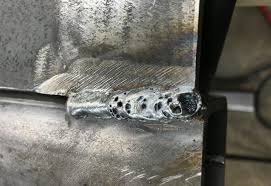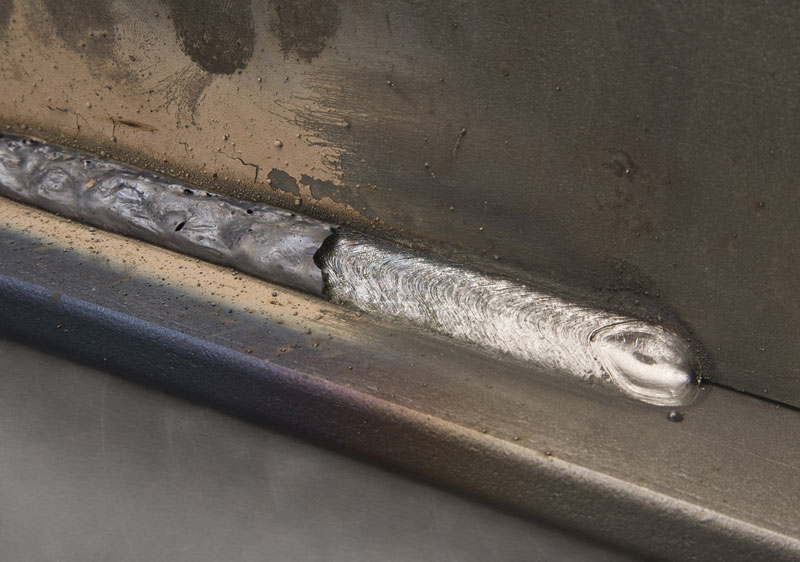What is Porosity in Welding: Necessary Tips for Getting Flawless Welds
Wiki Article
Deciphering the Mystery of Porosity in Welding: Tips for Lessening Problems and Taking Full Advantage Of Quality
In the intricate world of welding, porosity continues to be a persistent difficulty that can significantly influence the high quality and integrity of bonded joints. Understanding the variables that contribute to porosity formation is vital in the pursuit of remarkable welds. By deciphering the mystery of porosity and carrying out effective methods for problem reduction, welders can elevate the criteria of their work to attain exceptional top quality outcomes. As we dive into the midsts of porosity in welding, uncovering the tricks to its avoidance and control will be extremely important for professionals looking for to understand the art of high-quality weldments.Understanding Porosity in Welding
Porosity in welding, a common concern experienced by welders, refers to the visibility of gas pockets or spaces in the welded material, which can jeopardize the stability and high quality of the weld. These gas pockets are usually caught during the welding procedure as a result of numerous elements such as incorrect protecting gas, infected base products, or inaccurate welding parameters. The formation of porosity can weaken the weld, making it at risk to fracturing and rust, eventually bring about architectural failures.Understanding the origin of porosity is important for welders to successfully stop its event. By identifying the value of keeping correct gas securing, ensuring the cleanliness of base materials, and optimizing welding setups, welders can substantially reduce the chance of porosity formation. In addition, making use of strategies like pre-heating the base product, utilizing appropriate welding techniques, and conducting comprehensive evaluations post-welding can further help in minimizing porosity flaws. In general, an extensive understanding of porosity in welding is crucial for welders to produce high-grade and resilient welds.

Usual Causes of Porosity
When inspecting welding procedures for potential top quality problems, understanding the usual reasons of porosity is important for preserving weld integrity and avoiding architectural failures. Porosity, defined by the presence of tooth cavities or voids in the weld metal, can dramatically compromise the mechanical homes of a welded joint.
Furthermore, welding at improper criteria, such as excessively high travel rates or currents, can create excessive turbulence in the weld swimming pool, trapping gases and creating porosity. By attending to these usual causes through appropriate gas securing, material preparation, and adherence to optimum welding criteria, welders can reduce porosity and improve the quality of their welds.
Techniques for Porosity Avoidance
Carrying out efficient preventative steps is vital in reducing the occurrence of porosity in welding procedures. One strategy for porosity prevention is making certain appropriate cleansing of the base metal before welding. Impurities such as oil, grease, corrosion, and paint can bring about porosity, so extensive cleaning utilizing ideal solvents or mechanical techniques is crucial.
Utilizing premium filler materials and protecting gases that are suitable for the base steel and welding process can significantly decrease the threat of porosity. In addition, preserving proper welding specifications, such as voltage, present, travel rate, and gas circulation rate, is important for porosity avoidance.
In addition, using appropriate welding strategies, such as preserving a constant traveling speed, electrode angle, and arc size, can aid protect against porosity (What is Porosity). pop over here Adequate training of welders to ensure they follow ideal techniques and quality control procedures is additionally necessary in reducing porosity issues in welding

Finest Practices for Top Quality Welds
One trick practice is keeping proper tidiness in the welding area. Completely cleaning up the workpiece and bordering location prior to welding can help reduce these concerns.One more finest method is to very carefully pick the ideal welding criteria for the particular products being signed up with. Appropriate parameter selection ensures optimal weld infiltration, combination, and total high quality. Utilizing high-grade welding consumables, such as electrodes and filler steels, can find out here dramatically influence the last weld high quality.
Significance of Porosity Control
Porosity control plays an important role in ensuring the integrity and top quality of welding joints. Porosity, identified by the visibility of cavities or voids within the weld metal, can substantially endanger the mechanical residential or commercial properties and structural stability of the weld. Extreme porosity weakens the weld, making it much more prone to splitting, deterioration, and total failing under operational lots.Effective porosity control is important for maintaining the preferred mechanical residential properties, such as strength, ductility, and strength, of the bonded joint. What is Porosity. By lessening porosity, welders can enhance the general high quality and reliability reference of the weld, ensuring that it fulfills the efficiency demands of the designated application
Furthermore, porosity control is essential for achieving the wanted aesthetic look of the weld. Too much porosity not just compromises the weld however additionally diminishes its visual allure, which can be important in sectors where aesthetic appeals are necessary. Proper porosity control techniques, such as utilizing the proper protecting gas, regulating the welding specifications, and making certain proper tidiness of the base products, are vital for creating high-quality welds with very little defects.

Conclusion
In verdict, porosity in welding is a typical flaw that can jeopardize the high quality of the weld. It is vital to manage porosity in welding to make certain the honesty and toughness of the last product.Report this wiki page